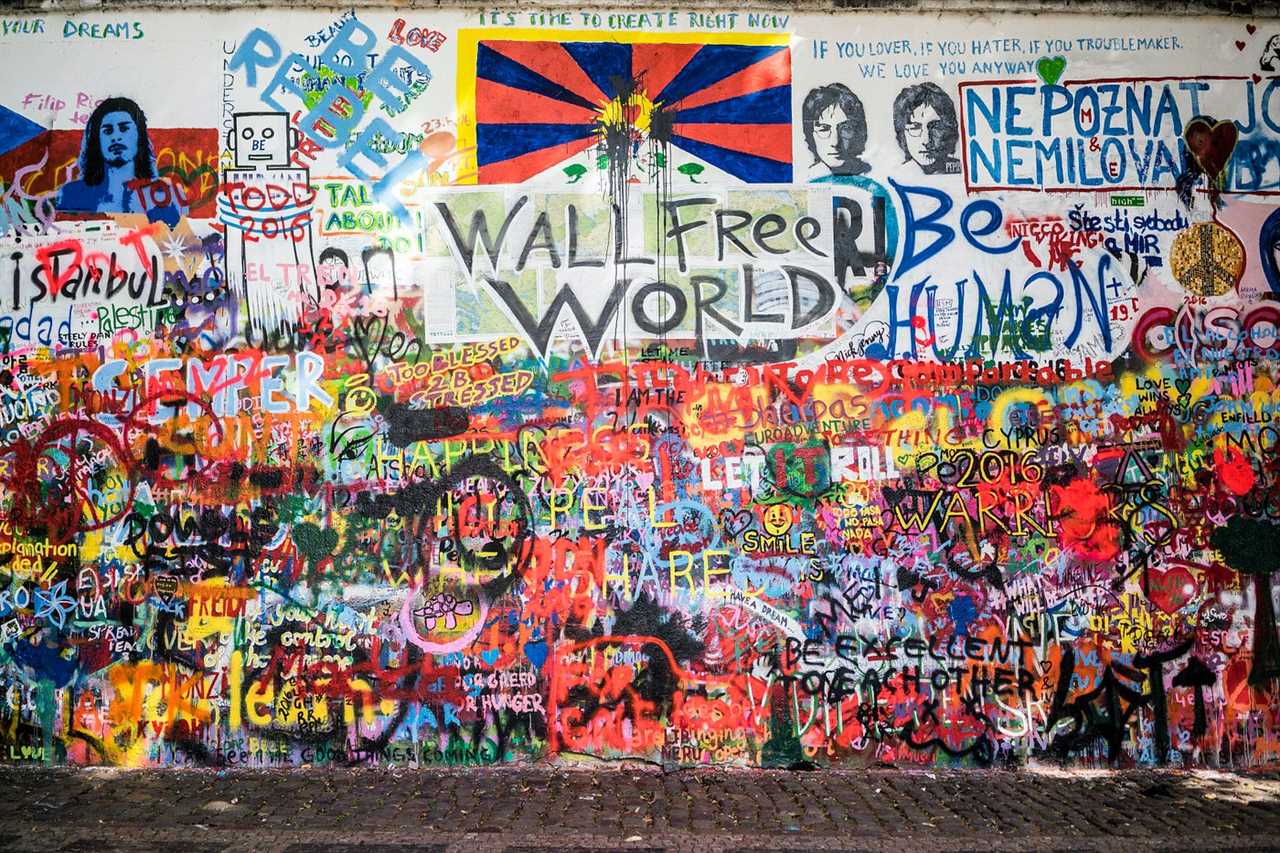
Street art murals have become an integral part of urban landscapes around the world. These colorful and often larger-than-life artworks can be found on the sides of buildings, walls, and even sidewalks, transforming drab and ordinary spaces into vibrant, eye-catching masterpieces.
Street art murals are not just walls adorned with paint; they represent a form of artistic expression and social commentary. Artists use these public canvases to make powerful statements about a variety of issues, including politics, social justice, and the environment. Through their bold and thought-provoking imagery, street art murals capture the essence of the communities in which they are created.
One of the most fascinating aspects of street art murals is their transient nature. Unlike traditional art forms that are carefully preserved and housed in museums, street art murals can be temporary. They may be painted over or even completely disappear over time, making each mural a unique and fleeting work of art. This impermanence adds an air of intrigue and excitement to the world of street art, as viewers never know when or where the next mural will appear.
Moreover, street art murals have the power to transform neighborhoods and foster a sense of pride and identity within communities. They often serve as landmarks and symbols of cultural identity, reflecting the diverse voices and perspectives of the people who call these neighborhoods home. In this way, street art murals contribute to the tapestry of urban culture, making cities more vibrant, dynamic, and visually appealing.
Street art has a rich and diverse history, drawing inspiration from a variety of sources. Its roots can be traced back to the graffiti culture of the 1970s and 1980s, which emerged in cities like New York and Philadelphia. Graffiti artists would use spray paint and markers to tag or write their names and messages on walls, subway cars, and other public spaces.
Over time, graffiti evolved into a more elaborate and artistic form of expression. Artists began to create larger and more intricate murals, often using stencils and other techniques to add depth and detail to their work. This shift in style and technique marked the beginning of what we now know as street art.
The influence of street art can also be seen in the political and social movements of the time. Artists used their work to comment on issues such as inequality, racism, and the environment. Street art became a powerful tool for activists and a way to engage with the public on important social issues.
Street art has since spread to cities around the world, becoming an integral part of urban culture. Today, artists continue to push the boundaries of street art, using new technologies and mediums to create stunning and thought-provoking pieces. Whether it’s a colorful mural on the side of a building or a hidden piece of art in a back alley, street art continues to captivate and inspire.
The Significance of Walls in Street Art
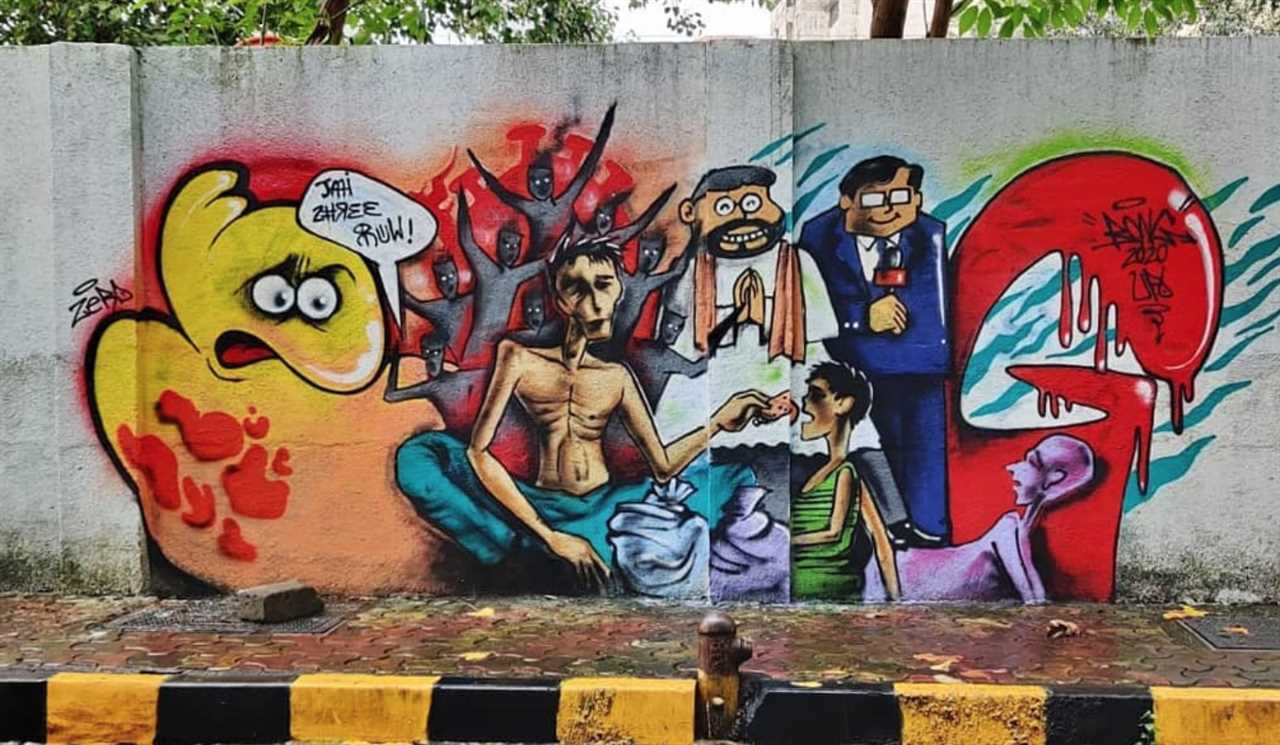
One of the primary appeals of using walls as the medium for street art is the accessibility it provides. Unlike traditional art forms that are often displayed in galleries or museums, street art is accessible to everyone, regardless of their background or socioeconomic status. This accessibility allows street artists to reach a wide audience and share their messages with the community at large.
Moreover, the artistic transformation of walls brings life and energy to urban environments. Previously overlooked and ignored, these walls now serve as landmarks that give identity and character to the surrounding area. Murals painted on walls can symbolize the cultural diversity, history, and social issues of a community, turning a simple brick wall into a powerful storytelling tool.
Street art also challenges the notion of traditional art spaces and the exclusivity they often promote. By taking their art to the streets, artists bypass the gatekeepers of the art world, making their work accessible to all who pass by. Walls become a democratic space where anyone can engage with and appreciate art, breaking down barriers and fostering a sense of community.
Furthermore, walls in street art become a medium for social and political commentary. Artists use their murals to address pressing issues, provoke thought, and spark conversations. These walls become a visual representation of the collective voice of the community, as they reflect the concerns and aspirations of the people who inhabit the space.
Different Styles of Street Art
Street art encompasses a wide variety of artistic styles and techniques. Here are some of the most popular styles you are likely to encounter when exploring urban areas:
Graffiti: Graffiti is arguably the most well-known and controversial form of street art. It typically involves writing or drawing on public surfaces using spray paint or markers. Graffiti can range from simple tags and throw-ups to highly intricate and detailed pieces of art.
Stencil Art: Stencil art is a technique that involves creating a design by cutting out a template and then spraying or painting over it. This style allows artists to quickly and easily reproduce their designs on various surfaces.
Mural: Murals are large-scale artworks that are painted directly onto walls or other surfaces. They often depict complex and highly detailed designs, and are usually created with brushes and paint.
Street Sculptures: Street sculptures involve three-dimensional artwork that is placed in public spaces. This can include statues, installations, and other types of sculptures. Street sculptures can add a unique and unexpected element to urban environments.
Street Installations: Street installations are temporary artworks that are created using a variety of materials and techniques. These installations can take many forms, such as interactive displays, light projections, or mixed media constructions. They often challenge viewers’ perceptions of public spaces and engage them in new and unexpected ways.
Sticker Art: Sticker art is a form of street art that involves creating and distributing stickers with various designs and messages. Stickers can be easily applied to surfaces, making them a popular medium for artists to express their ideas and make their mark on the urban landscape.
These are just a few examples of the diverse range of street art styles you may encounter while exploring the vibrant world of urban culture.
Colorful and Eye-Catching Mural Techniques
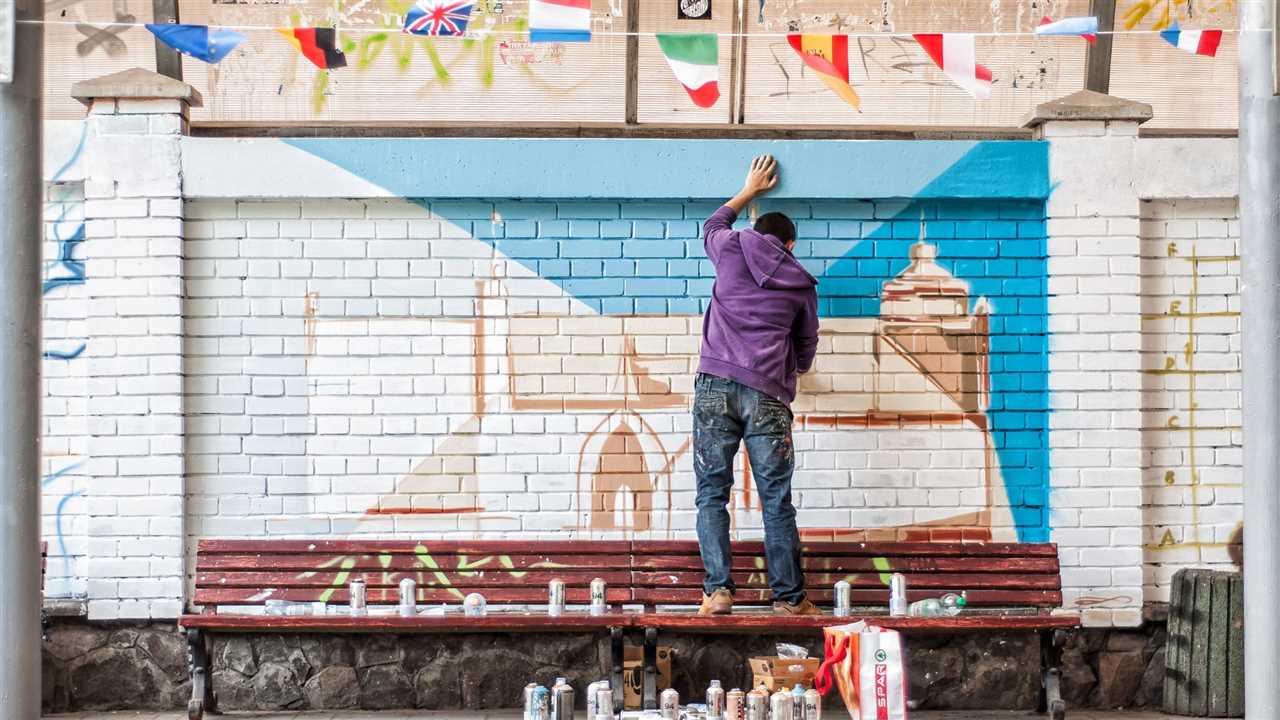
One popular technique is the use of stencils. Artists create intricate designs on a stencil, which they then use to spray paint onto a wall or surface. This method allows for precise and detailed artwork, as well as the ability to quickly reproduce the same image in multiple locations.
Another technique is wheatpasting. This involves applying a mixture of water and flour to a design printed on paper or fabric, and then adhering it to a wall or surface. Wheatpasting allows artists to create large-scale, temporary murals that can easily be removed or replaced.
Many street artists also utilize the technique of 3D mural painting. By using shading, perspective, and optical illusions, artists can create the illusion of depth and dimension on a flat surface. These murals often appear to jump off the wall and interact with the surrounding environment.
Collage is another technique frequently used by street artists. They combine different materials, such as photographs, newspaper clippings, and found objects, to create visually dynamic and textured murals. Collage allows for a unique and layered look that adds depth and interest to the artwork.
Graffiti is one of the oldest and most well-known mural techniques. Artists use spray paint and markers to create bold and expressive designs, often incorporating lettering and symbols. Graffiti murals can range from simple tags to elaborate and complex pieces that cover entire buildings.
No matter the technique used, street art murals are a testament to the creativity and talent of urban artists. These colorful and eye-catching artworks add beauty and character to the streets, and serve as a vibrant expression of urban culture.
The Role of Graffiti in Street Art Murals
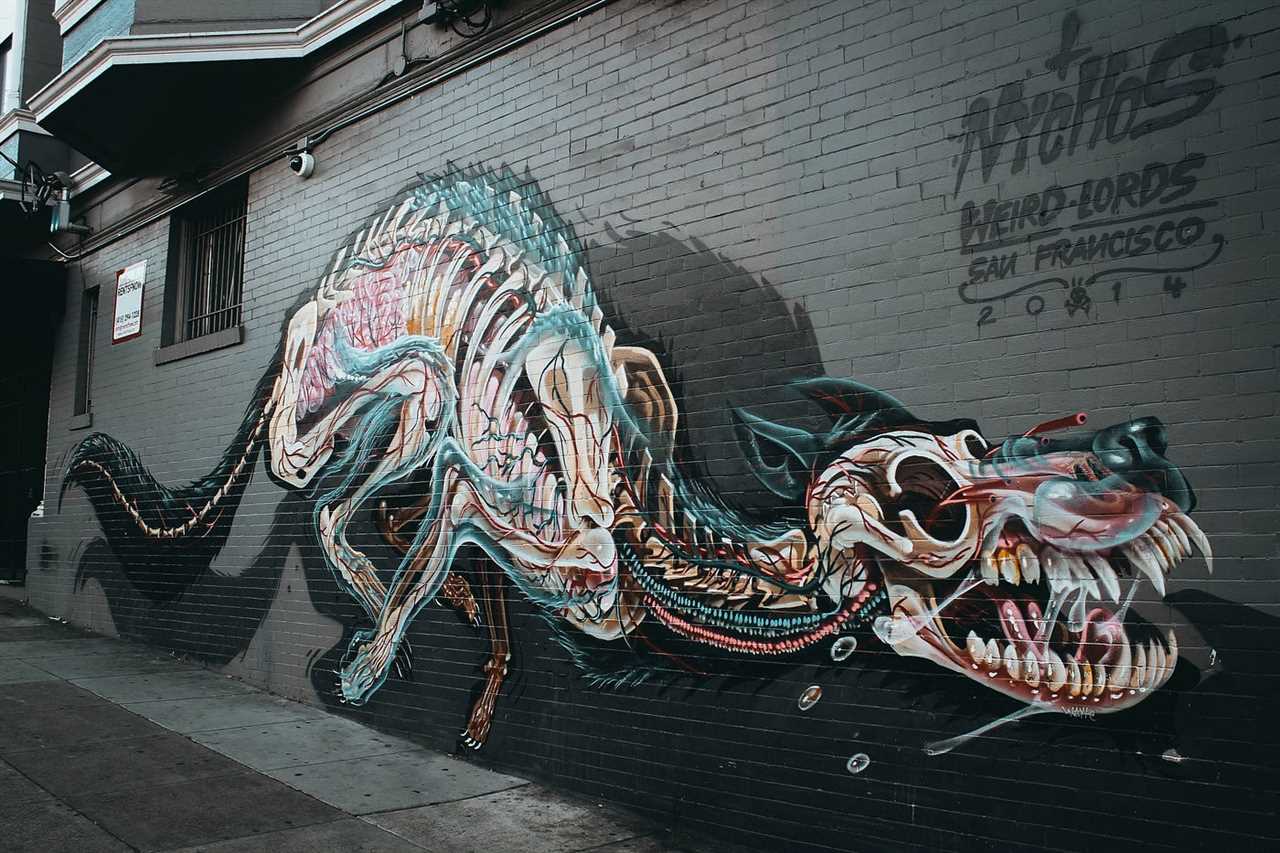
Graffiti plays an important role in the creation of street art murals. While some may consider graffiti as vandalism, it has become an integral part of the urban landscape and a vibrant expression of urban culture.
Graffiti artists use their creativity and artistic skills to transform blank walls into captivating murals. These murals often convey powerful messages, tell stories, or simply add aesthetic value to the environment. Graffiti allows artists to express their thoughts, feelings, and ideas in a bold and unapologetic manner.
Street art murals that incorporate graffiti can serve as a form of social commentary, giving a voice to marginalized communities and highlighting important social issues. The use of graffiti in murals can spark conversations and challenge the status quo, bringing attention to topics that may otherwise go unnoticed.
Additionally, graffiti adds an element of surprise and spontaneity to street art murals. While planned murals may captivate with their intricate designs, graffiti can inject a sense of energy and unpredictability into the artwork. It can make a mural stand out, attracting attention and making passersby stop and reflect on their surroundings.
Furthermore, the use of graffiti in street art murals helps to break down barriers between artists and the public. Graffiti is often created in public spaces, making art accessible to all and allowing for a more democratic form of expression. It blurs the line between the traditional art world and the streets, creating a sense of ownership and community pride.
The Rise of Street Art Festivals

Street art festivals have been gaining popularity around the world as a way to celebrate and showcase the vibrant urban culture. These festivals bring together talented artists from different backgrounds and styles, creating a melting pot of creativity and innovation.
One of the key benefits of street art festivals is that they provide a platform for artists to display their work publicly. Previously, many street artists had to work in the shadows, risking fines or even jail time for their art. By organizing festivals, cities and communities can provide a legal space for artists to express themselves and contribute to the cultural landscape.
A Showcase of Local Talent
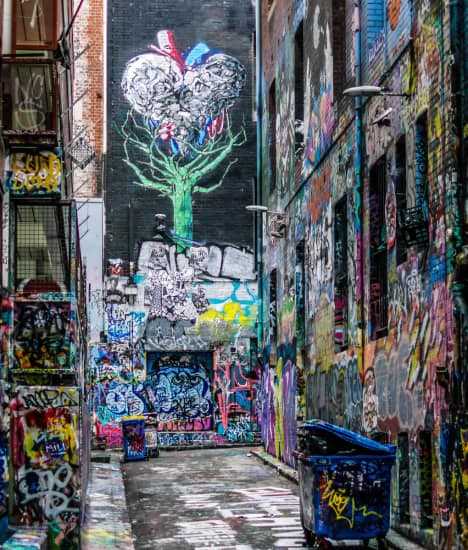
Street art festivals often prioritize and promote local artists, giving them an opportunity to showcase their talent and gain recognition within their own communities. These festivals serve as a launching pad for emerging artists, allowing them to gain exposure and connect with a wider audience.
Moreover, street art festivals create a sense of community and pride by celebrating the local talent and culture. They attract both locals and tourists alike, becoming a hub of creativity and a source of inspiration for all who attend.
Bringing Art to the Streets
Street art festivals transform public spaces into vibrant galleries, turning mundane walls and buildings into works of art. They breathe life into forgotten corners and add colors to the concrete jungle, making the urban environment more visually appealing and engaging for everyone.
Furthermore, these festivals encourage interaction and engagement with art by bringing it directly to the streets. Unlike traditional galleries, which can be intimidating and exclusive, street art is accessible to everyone. Passersby can admire the murals, take photos, and even interact with the artists, creating a unique and inclusive art experience.
| Benefits of Street Art Festivals | |
|---|---|
| Platform for artists | Public recognition |
| Promotion of local talent | Community pride |
| Transformation of public spaces | Inclusive art experience |
Urban Street Art and Social Commentary
Urban street art serves as a powerful medium through which artists can express their opinions on social issues and critique the existing system. The streets become a canvas for artists to address and bring attention to social and political problems that are often overlooked, giving a voice to the marginalized and oppressed.
One common form of social commentary found in urban street art is the portrayal of inequality and injustice. Artists depict themes of poverty, racism, sexism, and class struggle, shedding light on the harsh realities faced by many within society. These murals serve as a reminder of the need for social change and advocate for equality and justice.
Additionally, urban street art serves as a tool for raising awareness about environmental issues and sustainability. Artists create murals that depict the consequences of climate change, deforestation, and pollution, urging viewers to take action and make a difference. Through their art, they encourage individuals to consider their impact on the environment and inspire them to adopt more eco-friendly practices.
The power of visual storytelling

Street art murals are a unique form of storytelling that can reach a wide audience and elicit strong emotions. The combination of visual imagery and thought-provoking messages allows artists to convey their ideas in a powerful and memorable way. They can create a sense of empathy and understanding, sparking conversations and inspiring change.
Artists often use symbolism in their murals to communicate complex ideas with simplicity. By incorporating recognizable images or metaphors, they can convey their message to a broad audience, regardless of language or cultural barriers. This accessibility makes street art an inclusive form of expression, fostering dialogue and creating connections between people from different backgrounds.
Art as a catalyst for change
Urban street art has the potential to ignite social change by challenging the status quo and encouraging individuals to question the existing norms. By confronting viewers with provocative images and messages, artists can disrupt complacency and inspire action. Street art often serves as a call to arms, motivating people to stand up for their rights, advocate for justice, and strive for a better future.
The Medium of Spray Paint in Street Art
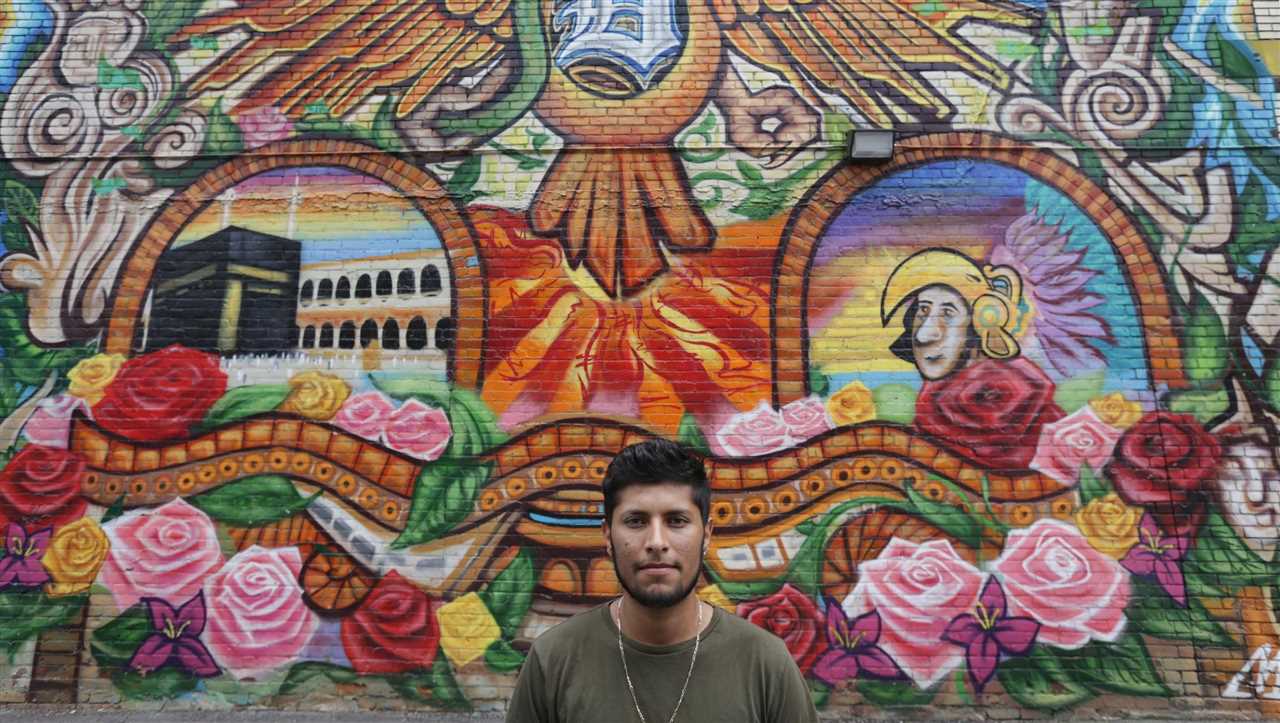
Spray paint is a widely used medium in street art, creating vibrant and eye-catching murals that capture the essence of urban culture. With its versatility and unique properties, spray paint allows street artists to express their creativity on a large scale, transforming blank walls into works of art.
One of the main advantages of spray paint is its ability to cover large surfaces quickly. Street artists can create intricate and detailed designs by manipulating the nozzle and pressure of the spray can, allowing for precise control over the application of paint. This enables artists to paint on a larger scale and reproduce their designs at a faster pace.
Another notable characteristic of spray paint is its opacity. The rich pigments in spray paint can create bold and intense colors, which catch the eye and draw attention to the artwork. Artists can layer different colors and create gradients or shadows, adding depth and dimension to their murals.
Techniques and Styles

Street artists have developed various techniques and styles using spray paint. One technique involves using stencils, which allow for precise and intricate designs. Artists can create elaborate stencils in advance and then spray paint over them, resulting in detailed and complex images.
Another popular style is the use of drips and splatters, which create a sense of movement and energy in the artwork. Artists can manipulate the nozzle of the spray can to achieve different effects, such as fine lines or wide sprays, adding dynamic textures to their murals.
Challenges and Considerations
Another consideration is the environmental impact of spray paint. Traditional spray paint contains volatile organic compounds (VOCs), which can be harmful to both human health and the environment. However, there are now alternative spray paint products available that are water-based and have reduced VOC levels, allowing artists to create street art with minimal environmental impact.
| Advantages | Challenges |
|---|---|
| Quickly covers large surfaces | Legal restrictions |
| Can create vibrant colors and gradients | Environmental impact |
| Allows for precise control over application | |
| Enables the use of stencils and other techniques |
Exploring Themes and Inspiration for Street Art Murals
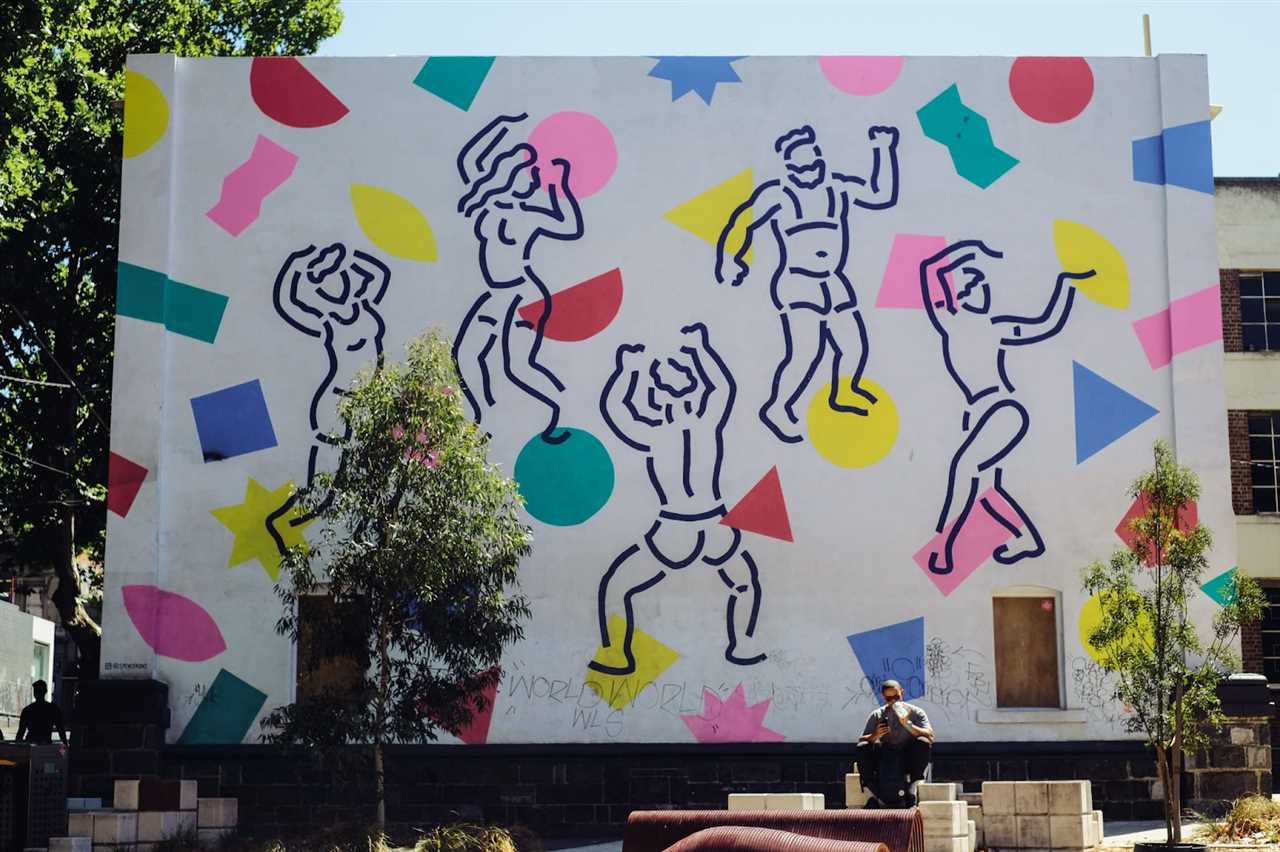
Street art murals are a powerful form of artistic expression that can transform public spaces and engage the community. Artists draw inspiration from a variety of themes and sources to create vibrant and thought-provoking artworks. Here are some common themes and sources of inspiration for street art murals:
Urban Life and Culture
Many street art murals capture the essence of urban life and culture. Artists often depict scenes of city life, portraying the energy and diversity of urban environments. They may incorporate elements such as skyscrapers, traffic, graffiti, and crowds to convey the unique atmosphere of city living.
Nature and the Environment
Another common theme in street art murals is nature and the environment. Artists use their murals to raise awareness about environmental issues or to simply celebrate the beauty of the natural world. They may depict animals, plants, landscapes, or scenes that highlight the importance of conservation and sustainability.
| Themes | Inspiration |
|---|---|
| Social Justice and Activism | Artists may use street art murals as a platform to express their political views and advocate for social justice. They may address issues such as inequality, racism, gender equality, or human rights. By creating art in public spaces, they hope to provoke conversations and promote positive change. |
| History and Culture | Many street art murals draw inspiration from local history and culture. Artists may depict significant historical events, iconic figures, or symbols that represent the heritage of a particular community. These murals help preserve and celebrate the collective memory of a place. |
| Imagination and Fantasy | Some street art murals explore themes of imagination and fantasy, creating dream-like or surreal landscapes. Artists may use vibrant colors, whimsical characters, and fantastical elements to transport viewers to otherworldly realms. These murals inspire wonder and provide an escape from reality. |
These are just a few examples of the many themes and sources of inspiration that street art murals can encompass. The versatility of this art form allows artists to express themselves and engage with the public in unique and meaningful ways.
The Impact of Street Art on Local Communities

Street art has a significant impact on local communities, transforming the urban landscape and fostering a sense of identity and pride among residents. It serves as a powerful form of expression, reflecting the culture, history, and values of the community.
1. Beautification of the Neighborhood
Street art murals bring vibrancy and color to once dull and rundown areas, transforming them into visually appealing spaces. By beautifying the neighborhood, street art creates a positive and uplifting atmosphere, thereby improving the quality of life for residents.
2. Cultural Understanding and Appreciation
Street art often showcases various cultural themes, symbols, and imagery that reflect the diverse backgrounds of local communities. By experiencing and appreciating these artworks, residents gain a deeper understanding and respect for different cultures, promoting unity and inclusivity.
Moreover, street art can act as a platform for conversations about social issues and challenges faced by the community. It has the power to raise awareness, challenge norms, and encourage dialogue on topics that are important to the locals, such as gentrification, social inequality, and environmental sustainability.
| Benefits | Impact |
|---|---|
| Artistic Expression | Encourages creativity and self-expression within the community |
| Tourism and Economic Growth | Attracts visitors and boosts local businesses |
| Social Cohesion | Strengthens social bonds and fosters a sense of community pride |
| Urban Regeneration | Revitalizes neglected areas and contributes to urban development |
Preserving Street Art and Its Challenges

Street art murals are a vibrant form of expression that adds life and character to urban spaces. However, preserving street art can prove to be a challenging task due to various factors.
Lack of Legal Protection

One of the major challenges in preserving street art is the lack of legal protection. Many pieces of street art are considered illegal as they are often created without permission on public or private property. This makes it difficult for authorities and art enthusiasts to protect and preserve these artworks. Without legal protection, street art murals can be easily removed or destroyed without any consequences.
Vandalism and Theft

Vandalism and theft are also significant challenges in preserving street art. Due to its public nature, street art is susceptible to vandalism by individuals who may deface or destroy the artwork. Additionally, valuable pieces of street art can be stolen, either by collectors or individuals looking to profit from their sale. The constant threat of vandalism and theft makes it difficult to preserve street art for future generations.
To address these challenges, communities and organizations have developed various strategies. These include creating designated areas for street art, where artists can freely express themselves without fear of prosecution. Moreover, some cities have established programs to protect and preserve street art, by providing legal recognition and protection to selected pieces. These initiatives help promote the value of street art and its role in urban culture.
| Challenge | Solution |
|---|---|
| Lack of Legal Protection | Establish designated areas for street art and provide legal recognition and protection to selected pieces. |
| Vandalism and Theft | Enhance surveillance and security measures around street art murals to deter vandalism and theft. |
Preserving street art is essential to maintain the vibrancy and cultural significance of urban areas. Through proactive measures and community involvement, street art can be protected and appreciated for its contribution to the artistic landscape of cities.

I am a mural enthusiast and a fervent admirer of street art. Rather than creating murals myself, I am passionate about collecting them. My love for street art knows no bounds. I am dedicated to curating and cherishing these artworks that grace the streets. My collection stands as a testament to my profound appreciation for this form of artistic expression.
read about me



